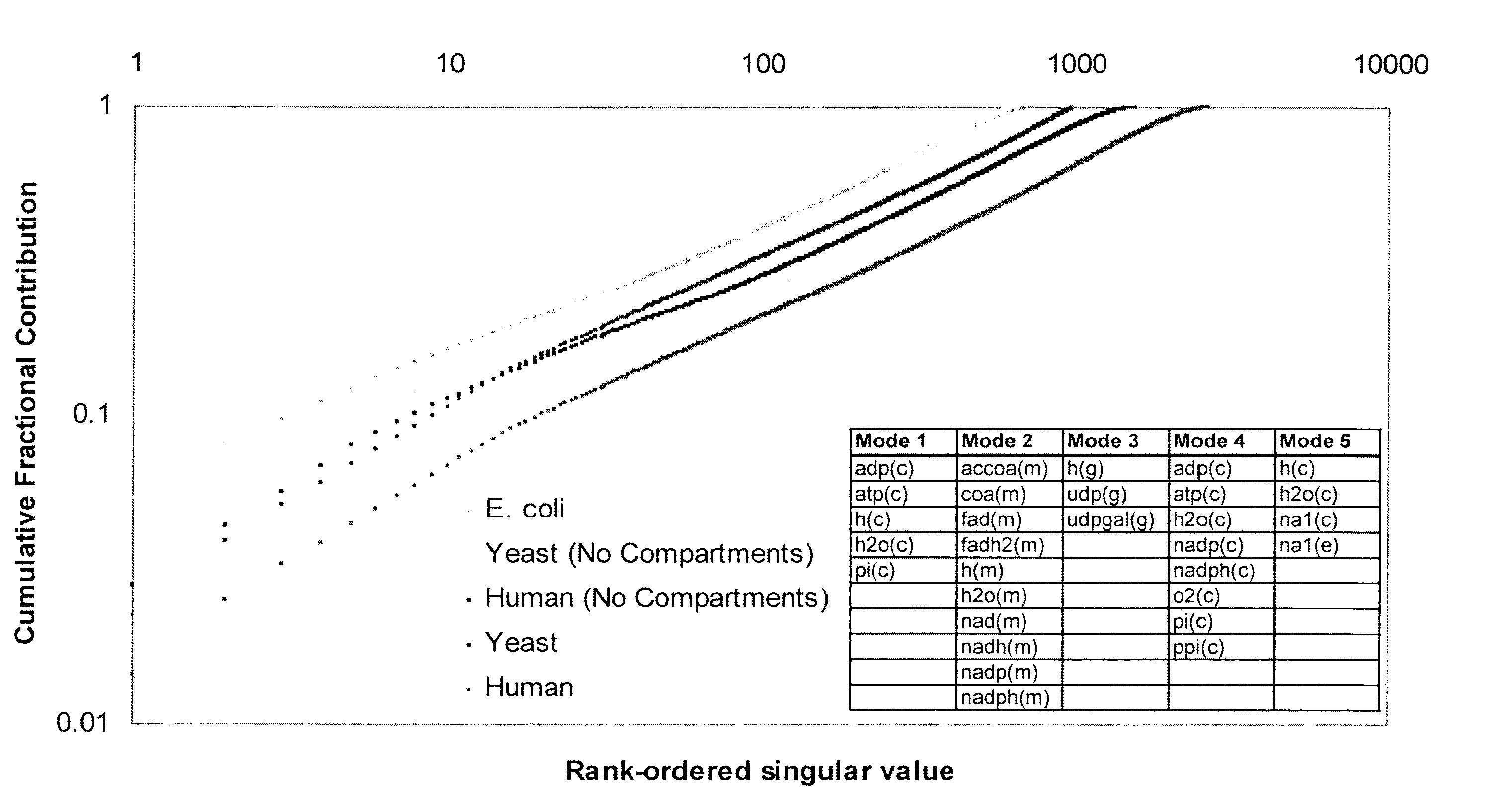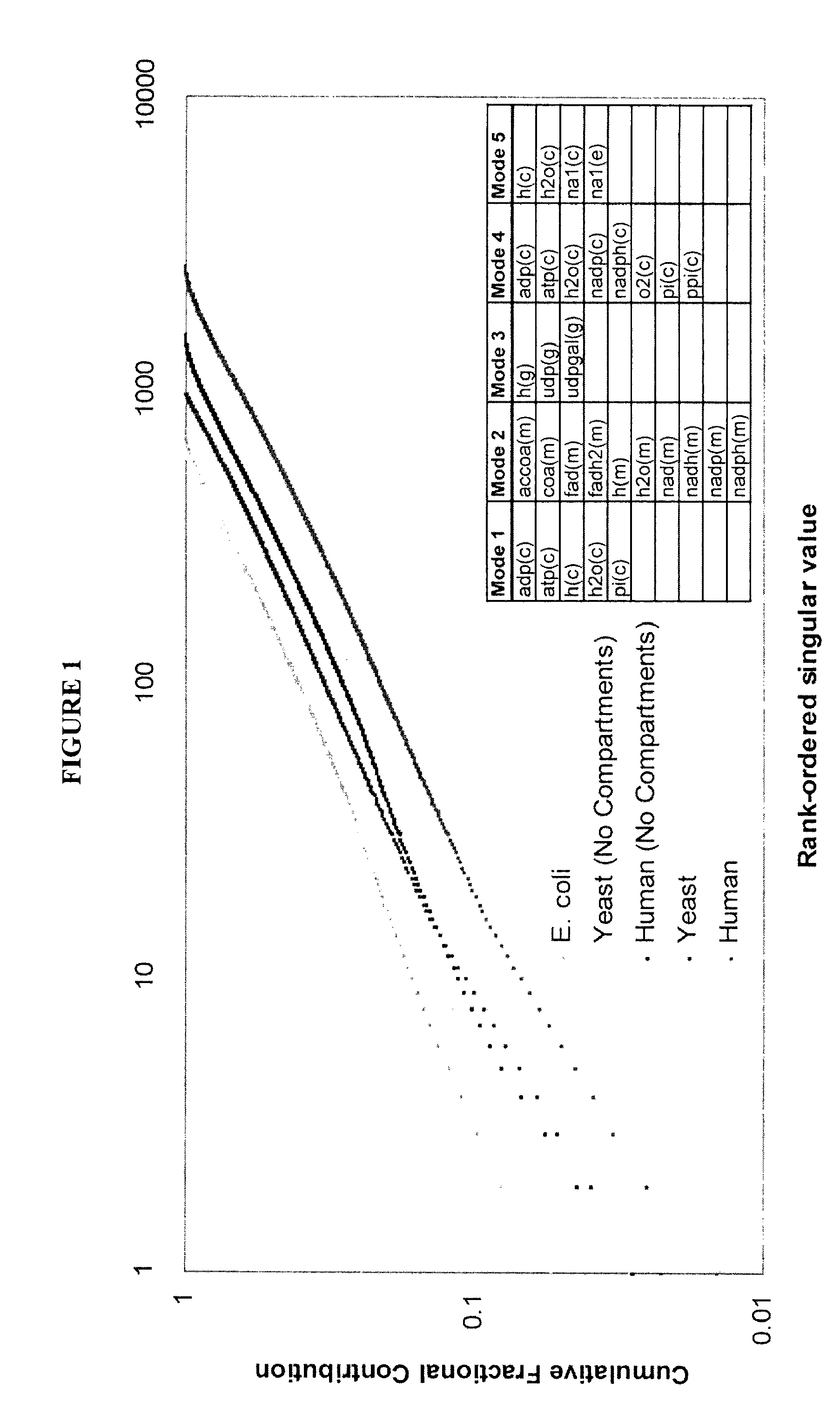Compositions and methods for modeling human metabolism
a technology of metabolism and composition, applied in the field of computational methods for simulating and predicting the activity of homo sapiens (human) reaction networks, to achieve the effect of minimizing or maximizing the objective function
- Summary
- Abstract
- Description
- Claims
- Application Information
AI Technical Summary
Benefits of technology
Problems solved by technology
Method used
Image
Examples
example 1
Reconstruction of the Metabolic Network of H. sapiens
[0114]This example shows how the metabolic network of H. sapiens was reconstructed to produce Recon 1.
[0115]Reconstruction procedure—An initial component list was assembled as described in the text. This list was then divided into eight metabolic subsets (amino acids, carbohydrates, energy, glycans, lipids, nucleotides, secondary metabolites / xenobiotics, vitamins and cofactors) for independent curation by a team of researchers. Putative gene assignments were verified based on evidence collected from genome annotation databases, namely EntrezGene (Maglott, D., Ostell, J., Pruitt, K. D. & Tatusova, T. Entrez Gene: gene-centered information at NCBI. Nucleic Acids Res 33, D54-8 (2005)) and Gene Cards (Safran, M. et al. GeneCards 2002: towards a complete, object-oriented, human gene compendium. Bioinformatics 18, 1542-3 (2002)), and the scientific literature. Genes were not included in the network unless there was experimental data su...
example 2
Functional Validation and Gap Analysis
[0117]Functional validation and gap analysis—The reconstruction was assembled in SimPheny (Genomatica, San Diego) and the stoichiometric matrix was formulated as previously described. Functional validation was performed using flux balance analysis and allowing recycled cofactor pairs to enter and leave the system as needed (see Tables 6-8). Comprehensive gap analysis of the stoichiometric matrix was performed after each round of functional validation. Every metabolite that was not produced or consumed was re-reviewed manually by returning to the literature to identify possible reactions describing its degradation, production, or transport. A final round of gap analysis was performed upon completion of H. sapiens Recon 1 (a description of unresolved gaps is provided in Tables 1-5).
example 3
[0118]Network analysis—Knowledge landscapes were generated for pathways with 5 or more reactions using Matlab v6.5 (The MathWorks, Inc.). Coupled reaction sets were calculated as described by Burgard et al. (Burgard, A. P., Nikolaev, E. V., Schilling, C. H. & Maranas, C. D. Flux coupling analysis of genome-scale metabolic network reconstructions. Genome Res 14, 301-12 (2004)) using Matlab v6.5 (The MathWorks, Inc.) for aerobic glucose uptake conditions. Briefly, for all the fluxes in the network under specified input conditions, if two fluxes respond in the same manner (both increase or both decrease) to a perturbation, then they are said to be coupled. Note that variations in transport constraints may affect the composition of the coupled reaction sets.
PUM
 Login to View More
Login to View More Abstract
Description
Claims
Application Information
 Login to View More
Login to View More - R&D
- Intellectual Property
- Life Sciences
- Materials
- Tech Scout
- Unparalleled Data Quality
- Higher Quality Content
- 60% Fewer Hallucinations
Browse by: Latest US Patents, China's latest patents, Technical Efficacy Thesaurus, Application Domain, Technology Topic, Popular Technical Reports.
© 2025 PatSnap. All rights reserved.Legal|Privacy policy|Modern Slavery Act Transparency Statement|Sitemap|About US| Contact US: help@patsnap.com


